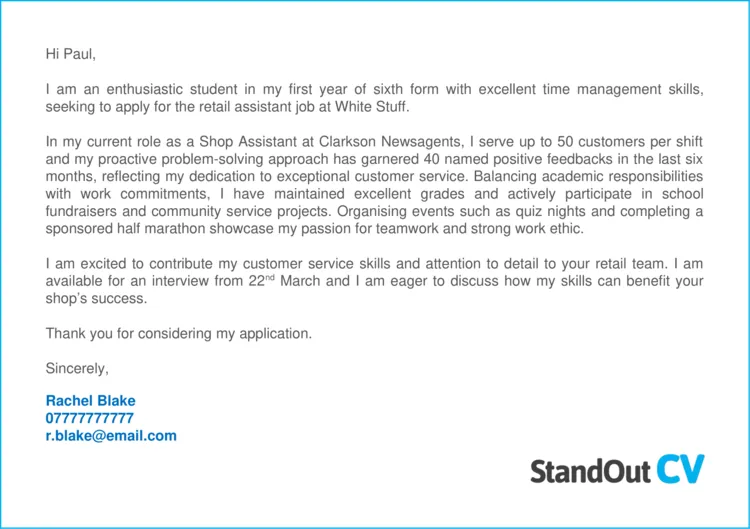What is a Cover Letter
A cover letter is a one-page document that you submit with your resume when applying for a job. It serves as an introduction to your resume, highlighting your most relevant skills and experiences and expressing your interest in the position. Think of it as your first impression, giving you a chance to make a strong and personalized case for why you’re the ideal candidate. A well-crafted cover letter can significantly increase your chances of getting an interview, so it’s crucial for students to understand its importance and learn how to write an effective one.
Why Cover Letters Are Important for Students
For students, a cover letter is especially important because it bridges the gap between limited work experience and the skills and potential employers seek. It provides a platform to explain academic achievements, extracurricular activities, and any other relevant experiences that demonstrate your abilities and suitability for the role. Moreover, it allows you to showcase your personality, enthusiasm, and genuine interest in the company and the specific position. A compelling cover letter can differentiate you from other applicants, even those with more experience, by highlighting your transferable skills and eagerness to learn and contribute. Therefore, taking the time to write a thoughtful cover letter is a worthwhile investment in your job search.
Cover Letter Structure
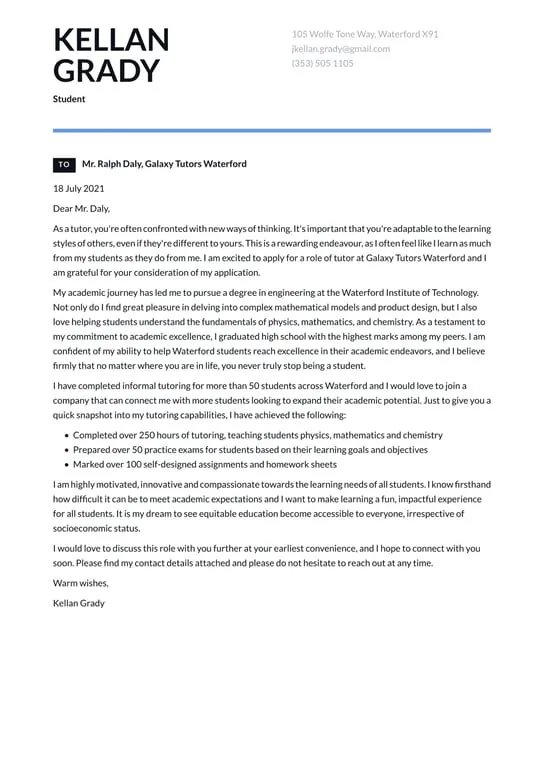
A well-structured cover letter is easy to read and immediately conveys your key qualifications. The standard structure includes a header, recipient information, a salutation, body paragraphs, and a closing paragraph. Each section plays a crucial role in presenting you as a strong candidate. A clear and logical structure helps the hiring manager quickly grasp your qualifications and enthusiasm. Let’s break down the different parts of a cover letter and how to write them.
Header Details
The header typically includes your name, address, phone number, and email address. It’s important to use a professional-looking email address. Ensure this information is easy to find at the top of the page. This helps the hiring manager easily contact you if they want to move forward with your application. Always double-check that your contact information is correct.
Recipient Information
Directly below your header, include the date and the hiring manager’s name, title, and the company’s address. If you can’t find the hiring manager’s name, research the company website or LinkedIn. Addressing the cover letter to a specific person shows initiative and attention to detail. Using a name personalizes the letter and makes it more engaging. If you can’t find a name, then use a formal greeting.
Salutation
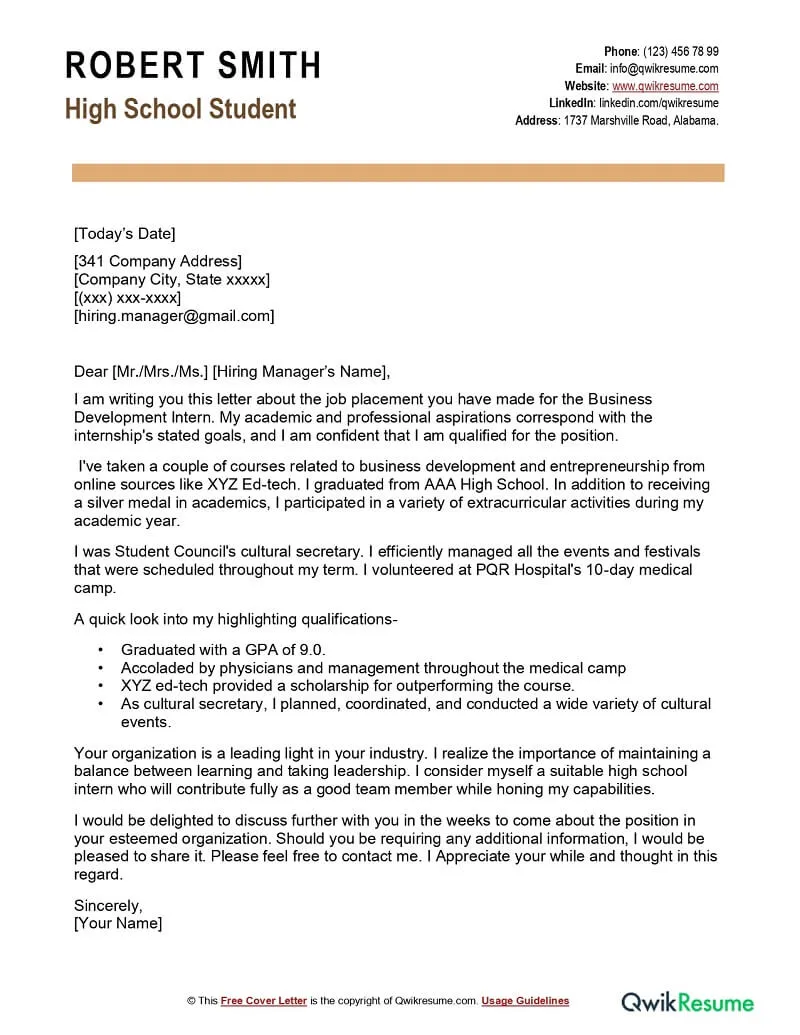
Use a professional salutation such as “Dear Mr./Ms. [Last Name]” or “Dear Hiring Manager.” Avoid generic greetings like “To Whom It May Concern.” If you don’t know the hiring manager’s name, the latter is acceptable. Make sure to spell the name correctly and use the appropriate title. The salutation sets the tone for the rest of the letter. A personalized salutation immediately grabs the reader’s attention and makes the letter more appealing. It also shows you’ve done your research and are serious about the opportunity.
Body Paragraphs
The body paragraphs are the core of your cover letter. They are where you showcase your qualifications, skills, and interest in the position and company. These paragraphs should be well-written, concise, and tailored to the specific job you’re applying for. You should keep the paragraphs brief, which makes the letter easier to read and digest.
First Paragraph Introduce Yourself and Purpose
Start by stating the position you’re applying for and how you learned about it. Briefly introduce yourself, mentioning your major or relevant academic background. Then, state your purpose for writing the letter—to express your interest in the position and highlight your qualifications. This paragraph sets the stage for the rest of your letter. It grabs the reader’s attention and provides context for your application. Ensure that the first sentence is impactful and clearly states your purpose.
Highlight Relevant Skills and Experiences
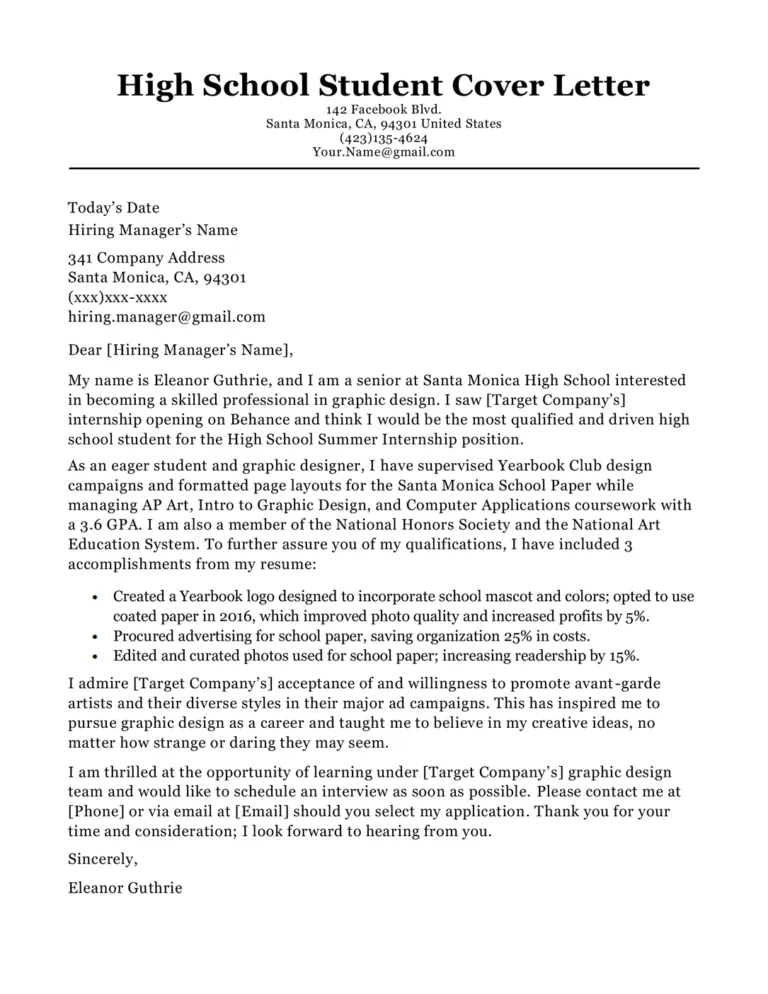
In the subsequent paragraphs, highlight your skills and experiences that align with the job requirements. Refer to the job description and identify key skills and qualifications the employer is seeking. Provide specific examples of how you’ve demonstrated these skills in previous roles, academic projects, or extracurricular activities. Explain the skills and how you developed them. Tailor your examples to the specific job description. Use strong action verbs to describe your accomplishments.
Quantify Achievements
Whenever possible, quantify your achievements. Use numbers and data to demonstrate the impact of your work. For example, instead of saying, “Improved customer service,” say, “Increased customer satisfaction by 15% through implementing a new feedback system.” Quantifying your achievements makes your statements more compelling and demonstrates the value you can bring to the company. Specific metrics provide concrete evidence of your abilities. Focus on results and outcomes that highlight your skills and contributions.
Use Action Verbs
Use strong action verbs to describe your skills and experiences. This helps to make your cover letter more dynamic and engaging. Some examples include: led, managed, developed, implemented, created, achieved, and improved. Action verbs make your accomplishments more vivid and memorable. Avoid passive language and focus on what you did and the impact you made. Strong verbs enhance readability and keep the reader’s interest.
Express Enthusiasm
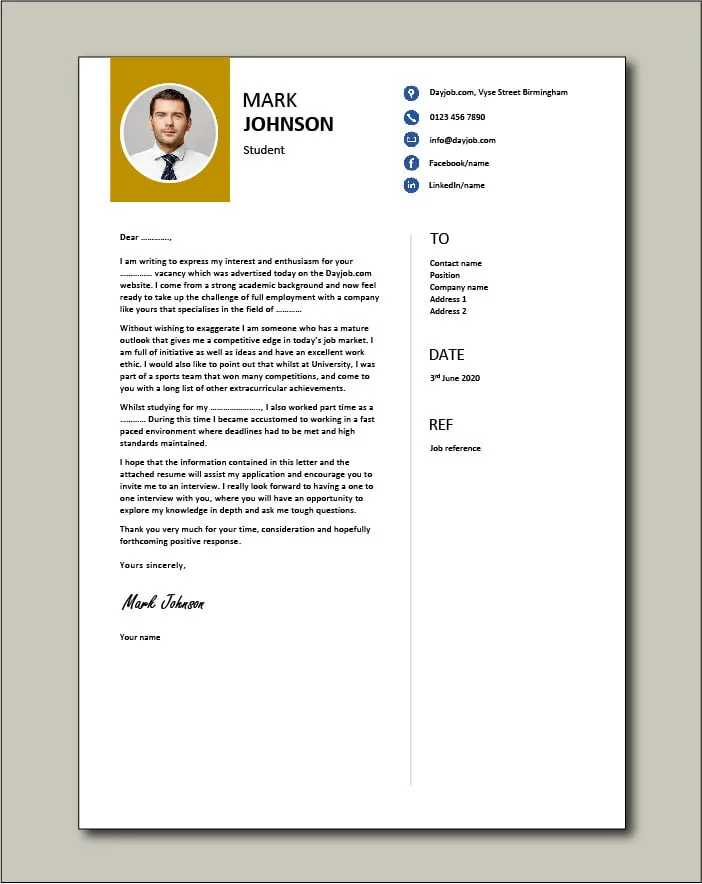
Express your enthusiasm for the position and the company. Explain why you’re interested in the role and what you admire about the company. Show that you’ve researched the company and understand its mission and values. Expressing enthusiasm demonstrates your passion and commitment to the opportunity. Doing your homework on the company shows that you are serious about the position. Explain why you are a good fit for the company.
Closing Paragraph
In the closing paragraph, summarize your qualifications and reiterate your interest in the position. Thank the hiring manager for their time and consideration. Express your eagerness to hear back from them. Keep the tone professional and confident. The closing paragraph leaves a final positive impression. It reinforces your key qualifications and reinforces your desire for the job.
Call to Action
End with a clear call to action, such as requesting an interview or inviting them to contact you. Provide your phone number and email address again for easy reference. A clear call to action makes it easy for the hiring manager to take the next step. Ensure your contact information is accurate. Include a clear call to action.
Formatting Tips
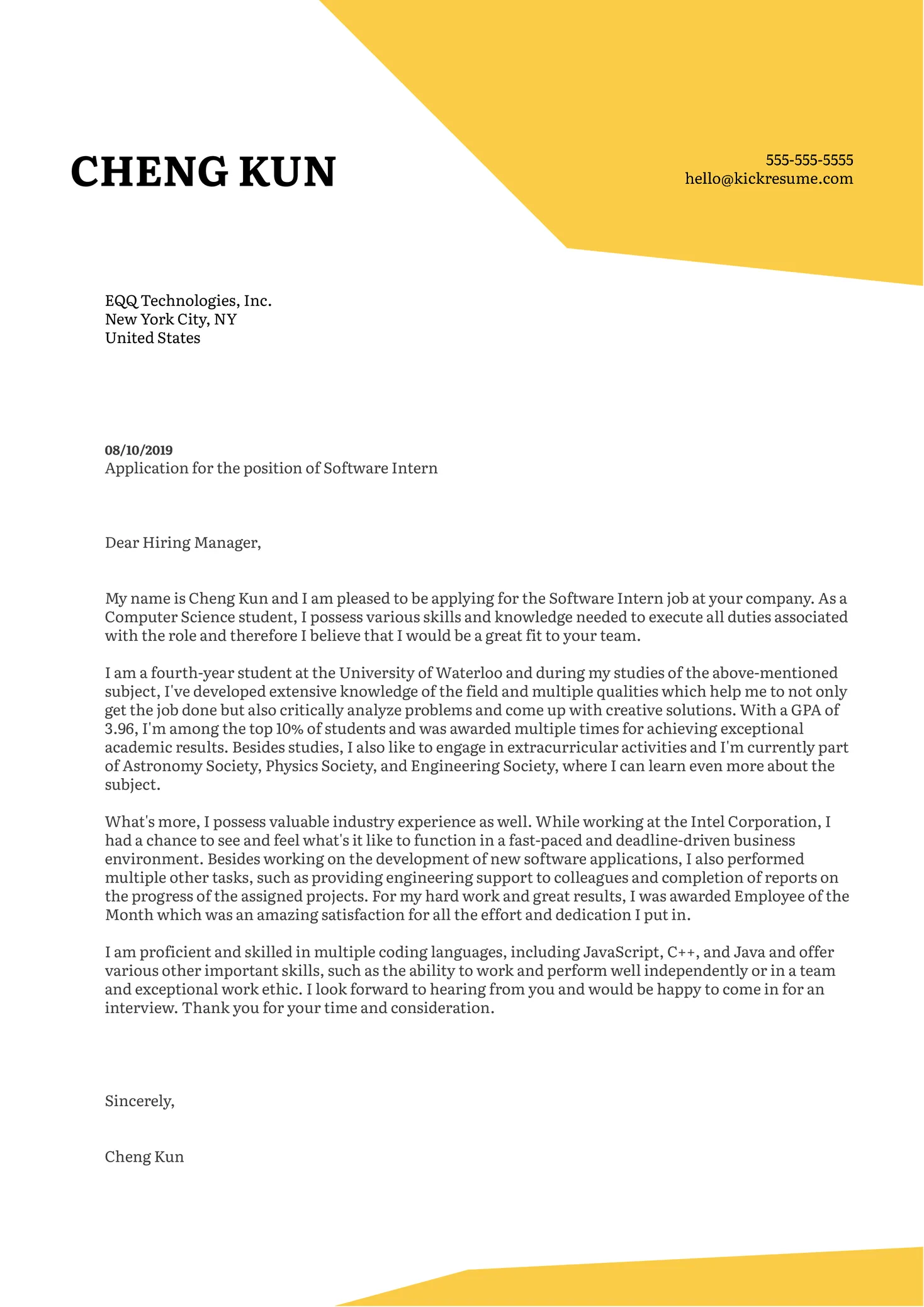
Proper formatting is essential for a professional and polished cover letter. Use clear and concise formatting to make your letter easy to read and visually appealing. Good formatting is important for any type of writing. It provides an easy reading experience for the hiring manager. A well-formatted cover letter showcases your attention to detail and professionalism.
Font and Font Size
Choose a professional and easy-to-read font, such as Times New Roman, Arial, or Calibri. Use a font size between 10 and 12 points. Avoid using unusual fonts or sizes that may distract the reader. A standard font makes your cover letter easy to read. A clear font and the right size enhance readability.
Margins and Spacing
Use standard 1-inch margins on all sides of the page. Use single-spacing for the body of the letter and double-spacing between paragraphs. Proper spacing makes your cover letter look neat and organized. Adequate margins provide a clean look. Proper spacing enhances readability.
Proofreading and Editing
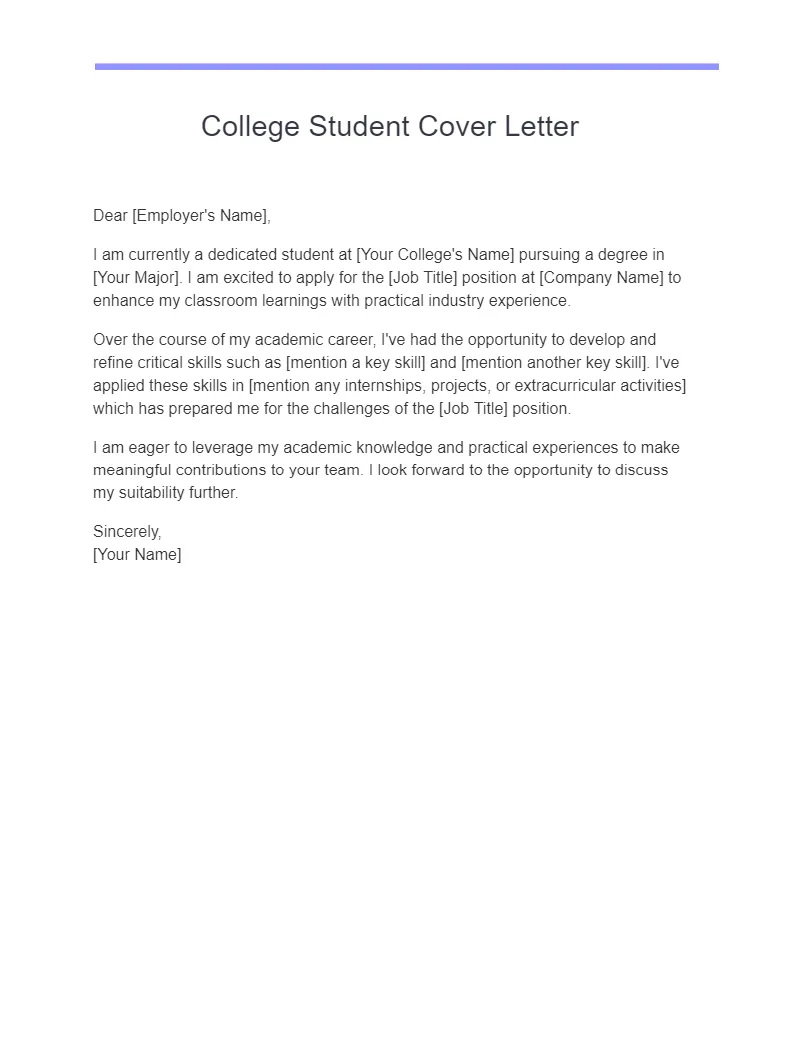
Thoroughly proofread and edit your cover letter for any grammatical errors, spelling mistakes, or typos. Check for clarity and conciseness. Ask a friend, professor, or career counselor to review your letter for feedback. Proofreading is the most critical step in your cover letter creation process. Typos and grammatical errors can make you look unprofessional. Proofread carefully to maintain professionalism. Get another pair of eyes to review your letter.
Cover Letter Examples for Students
Reviewing examples of cover letters can provide valuable guidance and inspiration. Look at different formats and styles to find what works best for you. Tailor the examples to fit your situation and the specific job you’re applying for. Modify the examples to fit your needs. The following examples cover a range of common scenarios.
Example Cover Letter for Internship
When applying for an internship, highlight relevant coursework, projects, and any skills gained through extracurricular activities. Mention your enthusiasm for the internship and how it aligns with your career goals. Showcase your eagerness to learn and contribute to the company. Focus on how the internship will help you advance your skills. Explain how you’ll bring value to the company.
Example Cover Letter for Part-time Job
For part-time jobs, emphasize your availability, reliability, and ability to manage your time effectively. Highlight any relevant work experience, even if it’s not directly related to the job. Show your willingness to take on responsibilities and work as part of a team. Showcase any customer service skills. Be sure to show you can handle work and school.
Example Cover Letter for Scholarship Application
When writing a cover letter for a scholarship, focus on your academic achievements, extracurricular involvement, and financial need. Highlight your goals and aspirations, and explain how the scholarship will help you achieve them. Emphasize your commitment to your studies and your community. Provide a clear picture of your academic and personal accomplishments. Outline why you are a worthy candidate for the scholarship.
Conclusion
A well-written cover letter is a crucial component of a successful job application for students. By following the guidelines and examples provided, you can create a compelling cover letter that showcases your skills, experiences, and enthusiasm for the position. Remember to tailor your letter to each specific job, proofread carefully, and always put your best foot forward. A great cover letter can open doors to new opportunities and help you launch your career. Good luck!
